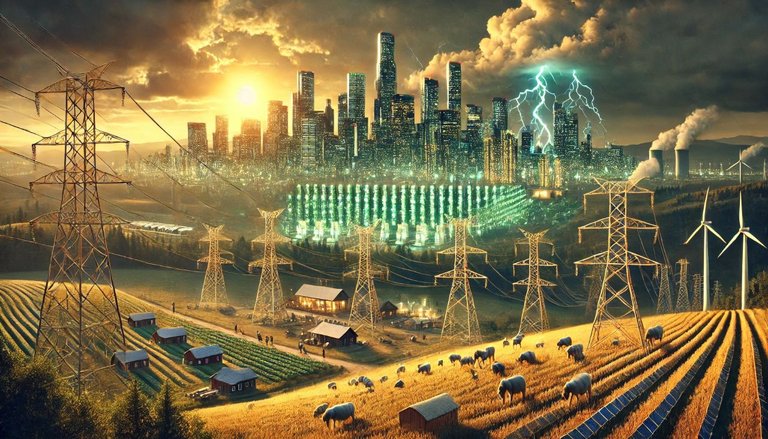KEY FACT: The increasing energy demands of cryptocurrency mining and artificial intelligence (AI) operations in North America are straining energy grids, with Texas experiencing a 4.6% annual rise in summer electricity consumption through 2029. These industries, characterized by their energy-intensive and unpredictable consumption patterns, are introducing significant challenges to grid stability and management, particularly in regions like Texas governed by ERCOT. To address these issues, measures such as advanced forecasting, demand-side management, and legislation like Texas’ HB 3390 have been implemented. Additionally, companies like MARA Holdings are exploring renewable and alternative energy sources, such as excess natural gas, to reduce competition with AI data centers and minimize environmental impacts.

Source: Power Grid
Crypto and AI Straining Power Grids
The rapid expansion of cryptocurrency mining and artificial intelligence (AI) operations is significantly increasing electricity demand across North America, posing challenges to the reliability and stability of energy grids. The North American Electric Reliability Corporation (NERC) has highlighted concerns regarding the substantial energy consumption of these industries and their potential impact on grid management.
NERC's latest Long-Term Reliability Assessment shows that regions like Texas are experiencing an annual increase in peak summer electricity demand of 4.6% through 2029, a rate four times higher than previous projections. This surge is largely attributed to the energy-intensive operations of AI data centers and cryptocurrency mining facilities. These sectors not only consume vast amounts of power but also exhibit variable load behaviors, adjusting consumption based on electricity prices or operational needs, which complicates grid management.
The unpredictable energy usage patterns of crypto mining and AI operations poses new risks to grid stability. Sudden changes in load can mimic issues associated with inverter-based resources, such as disconnections during faults or price spikes. This unpredictability poses significant challenges for grid operators, especially in managing variable renewable energy resources. In Texas, where a concentration of these operations exists, the Electric Reliability Council of Texas (ERCOT) has reported increasing risks linked to both contracted and non-contract energy loads.
To address these challenges, NERC advocates for proactive measures, including enhanced demand forecasting, advanced transmission planning, and expanded demand-side management programs. ERCOT has implemented energy response and demand response initiatives to balance grid load during critical periods. Additionally, Texas has introduced legislation, such as HB 3390, mandating improved tracking of distributed energy resources to enhance reliability assessments.
In response to growing concerns, some cryptocurrency mining firms are shifting toward renewable energy sources. For instance, MARA Holdings Inc., the largest publicly traded bitcoin miner, has launched a pilot project to power its mining operations with 25 megawatts of excess natural gas in the U.S. shale patch. This initiative aims to mitigate competition with AI data centers for electricity, which has driven up power prices. MARA's CEO, Fred Thiel, highlights that owning power generation allows the company to avoid costly regional grid prices. Partnering with NGON Solutions, MARA captures and converts natural gas at the wellhead, reducing flaring and creating carbon credits. This mobile power generation strategy offers energy producers in remote areas financial benefits and could eventually support high-performance computing for AI, depending on the technology's market viability.
The convergence of cryptocurrency mining and AI operations is driving unprecedented electricity demand in North America, challenging the capacity and reliability of existing energy grids. Addressing these challenges requires a multifaceted approach, including regulatory measures, technological advancements, and a transition toward sustainable energy sources, to ensure a stable energy infrastructure capable of supporting the fast-changing digital ecosystem.

If you found the article interesting or helpful, please hit the upvote button, and share for visibility to other hive friends to see. More importantly, drop a comment below. Thank you!
This post was created via INLEO, What is INLEO?
INLEO's mission is to build a sustainable creator economy that is centered around digital ownership, tokenization, and communities. It's Built on Hive, with linkages to BSC, ETH, and Polygon blockchains. The flagship application: Inleo.io allows users and creators to engage & share micro and long-form content on the Hive blockchain while earning cryptocurrency rewards.
Let's Connect
Hive: inleo.io/profile/uyobong/blog
Twitter: https://twitter.com/Uyobong3
Discord: uyobong#5966
Posted Using InLeo Alpha